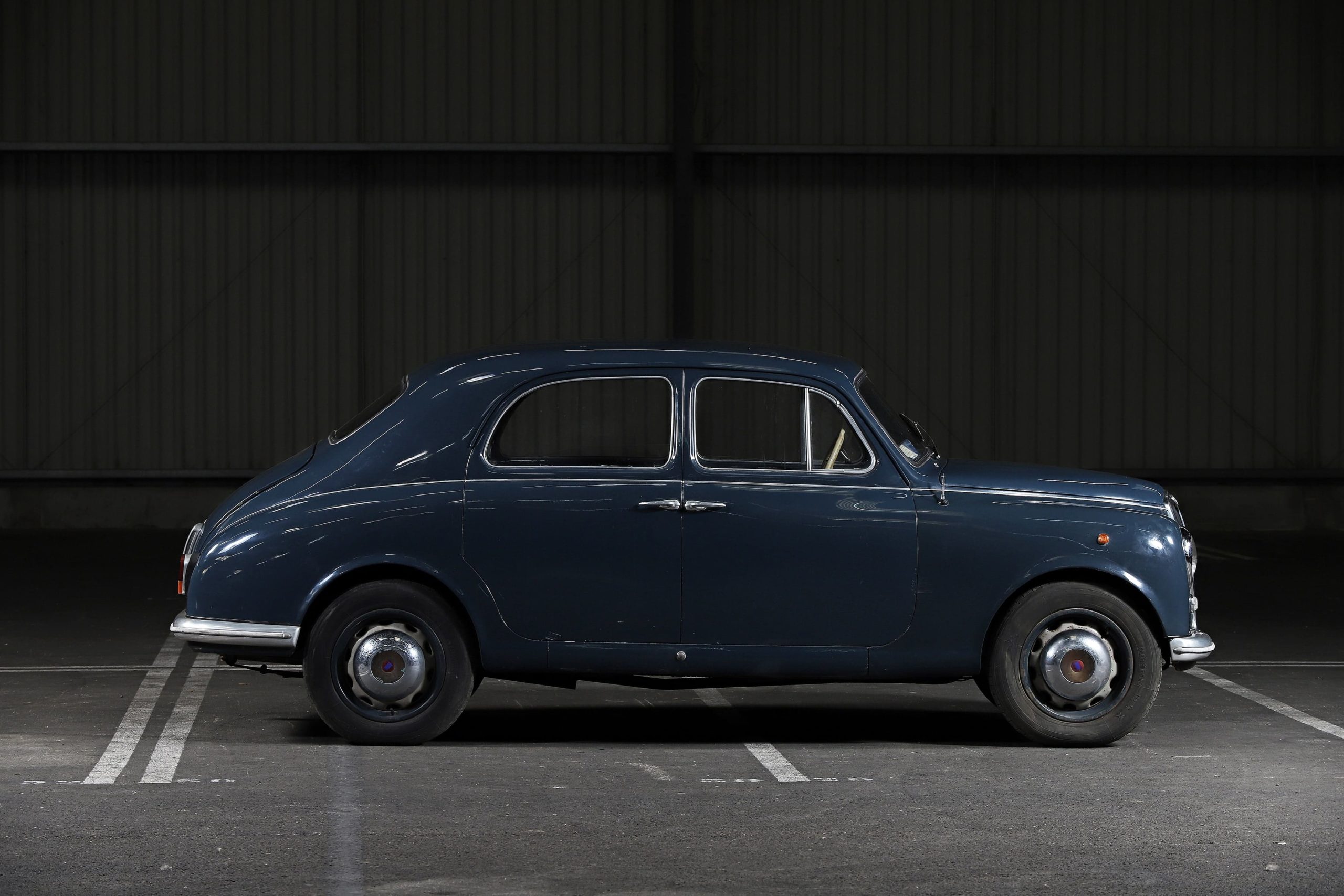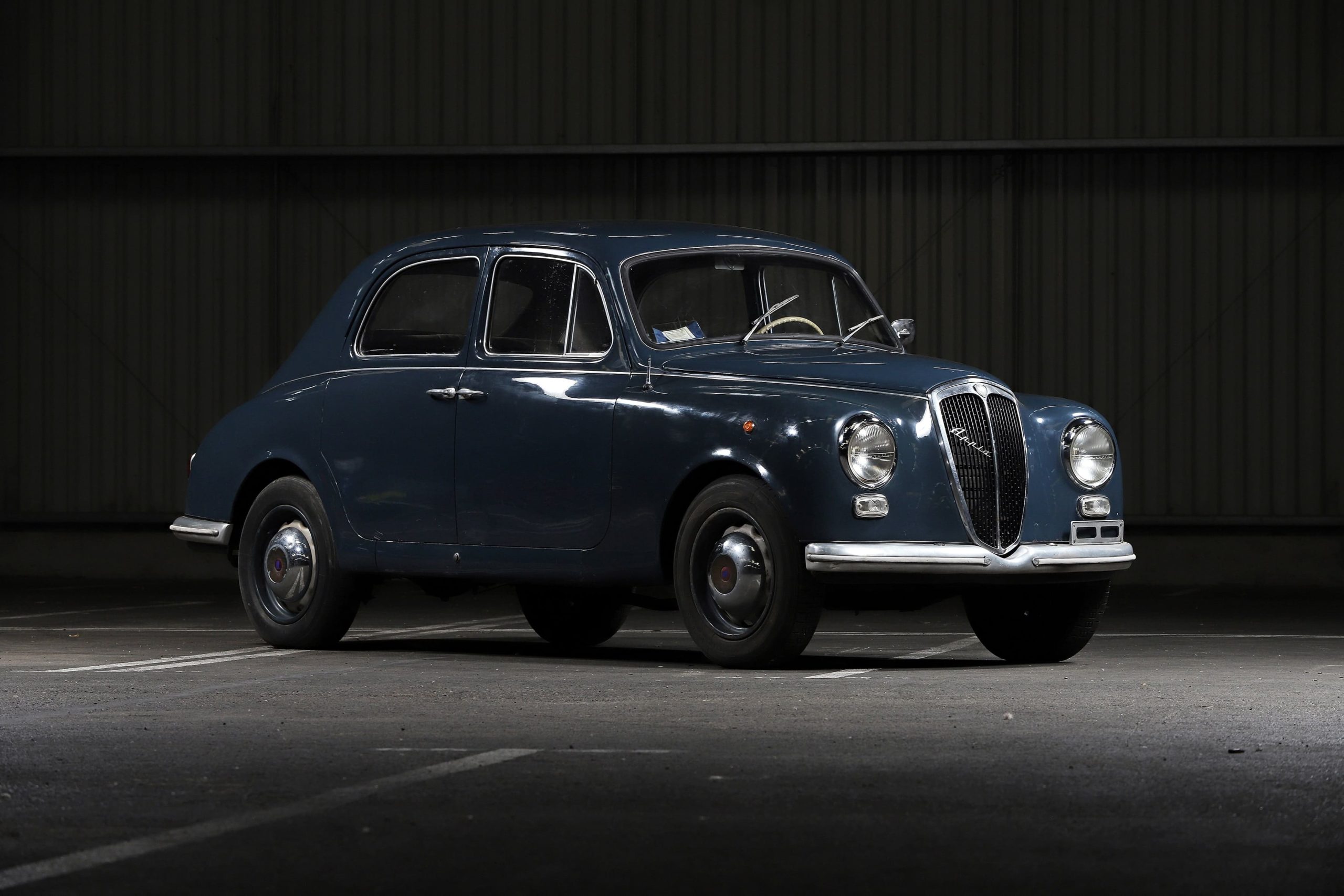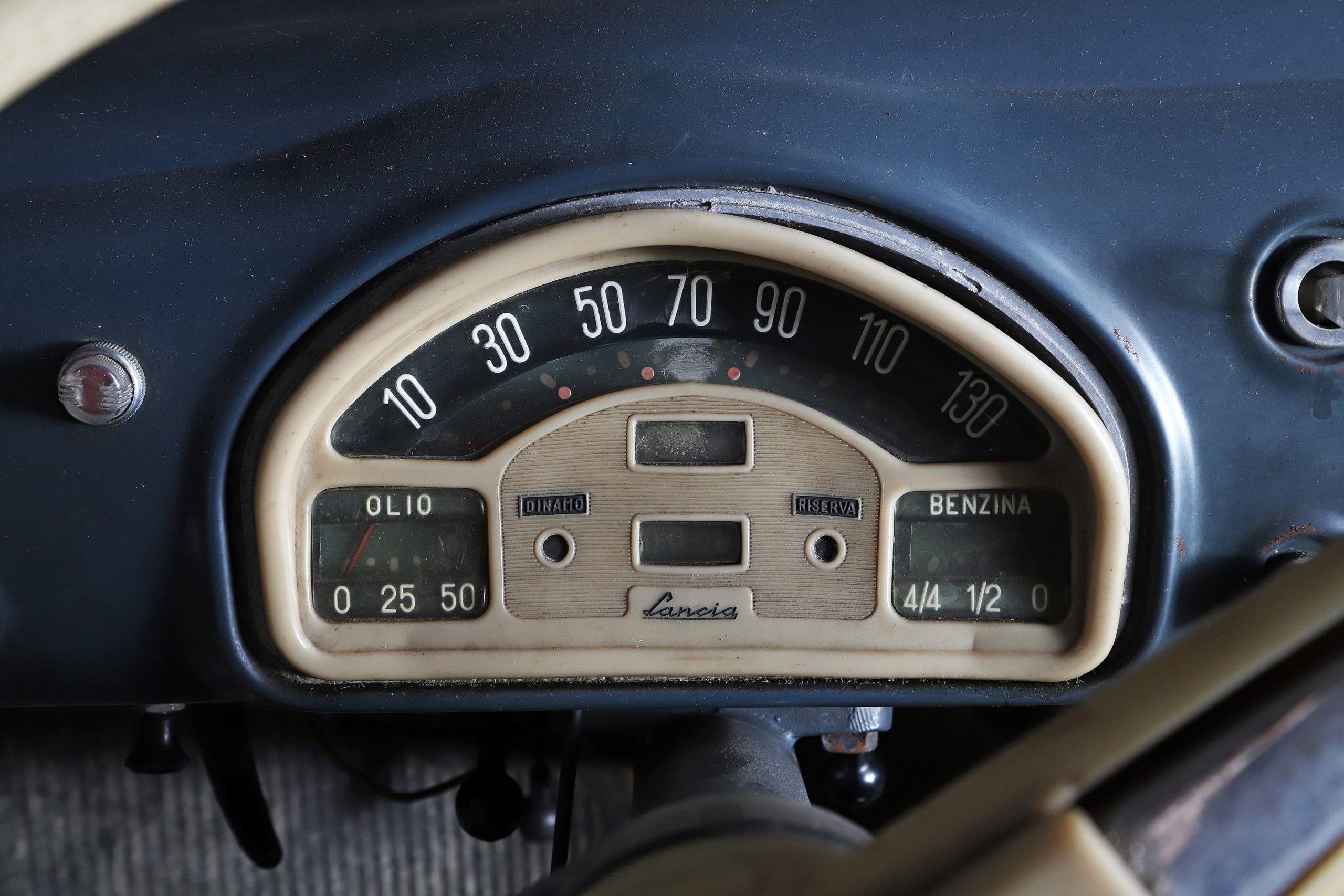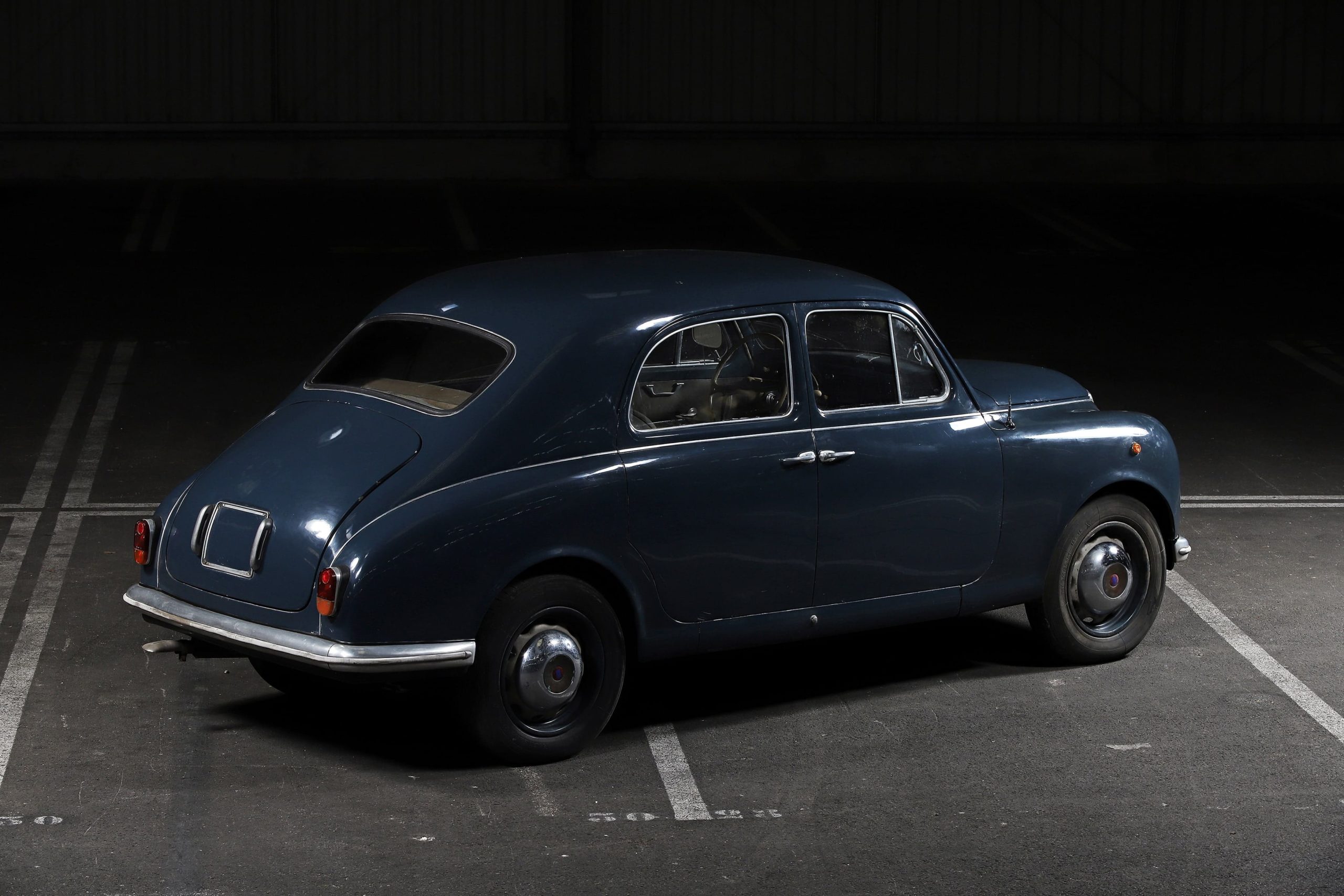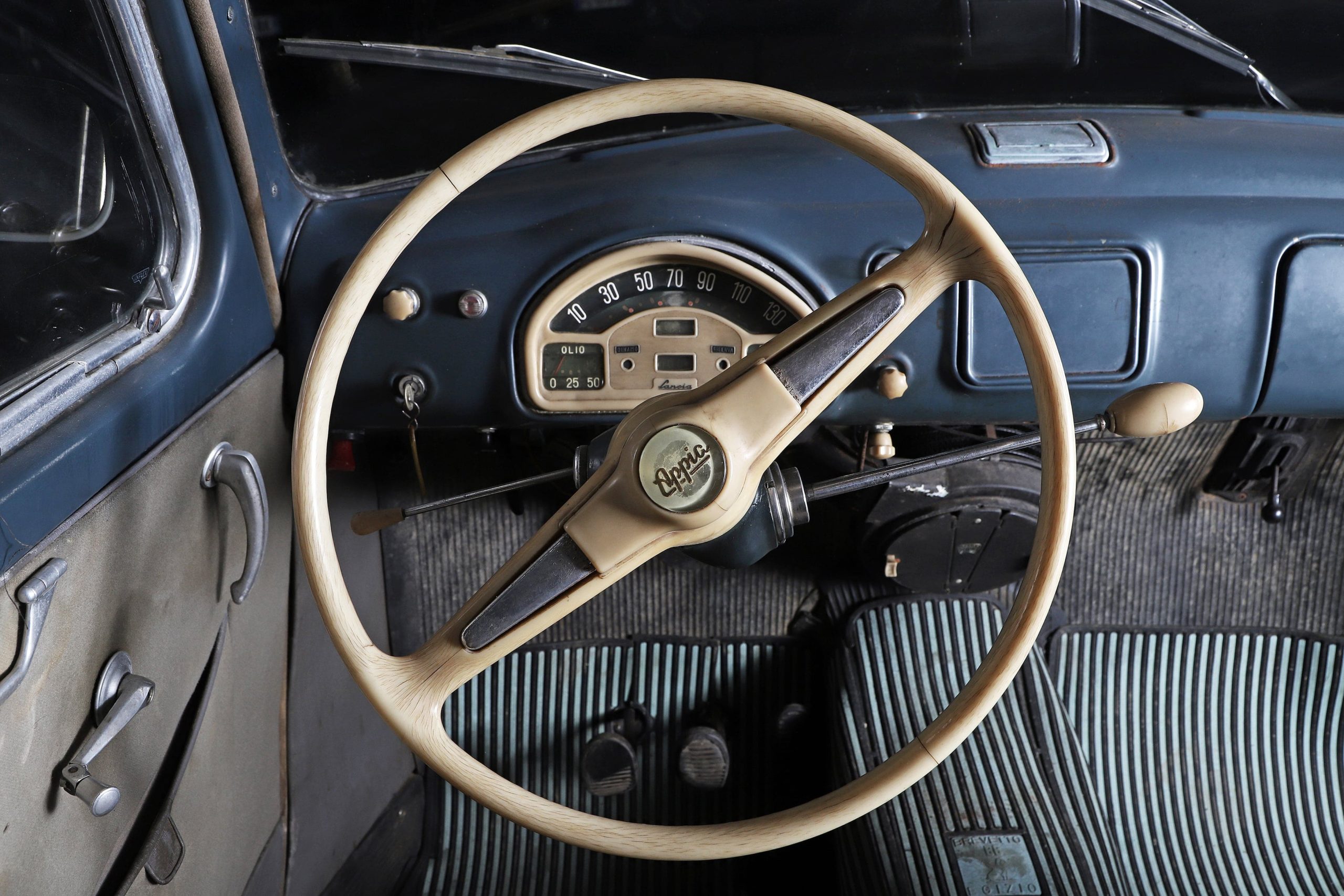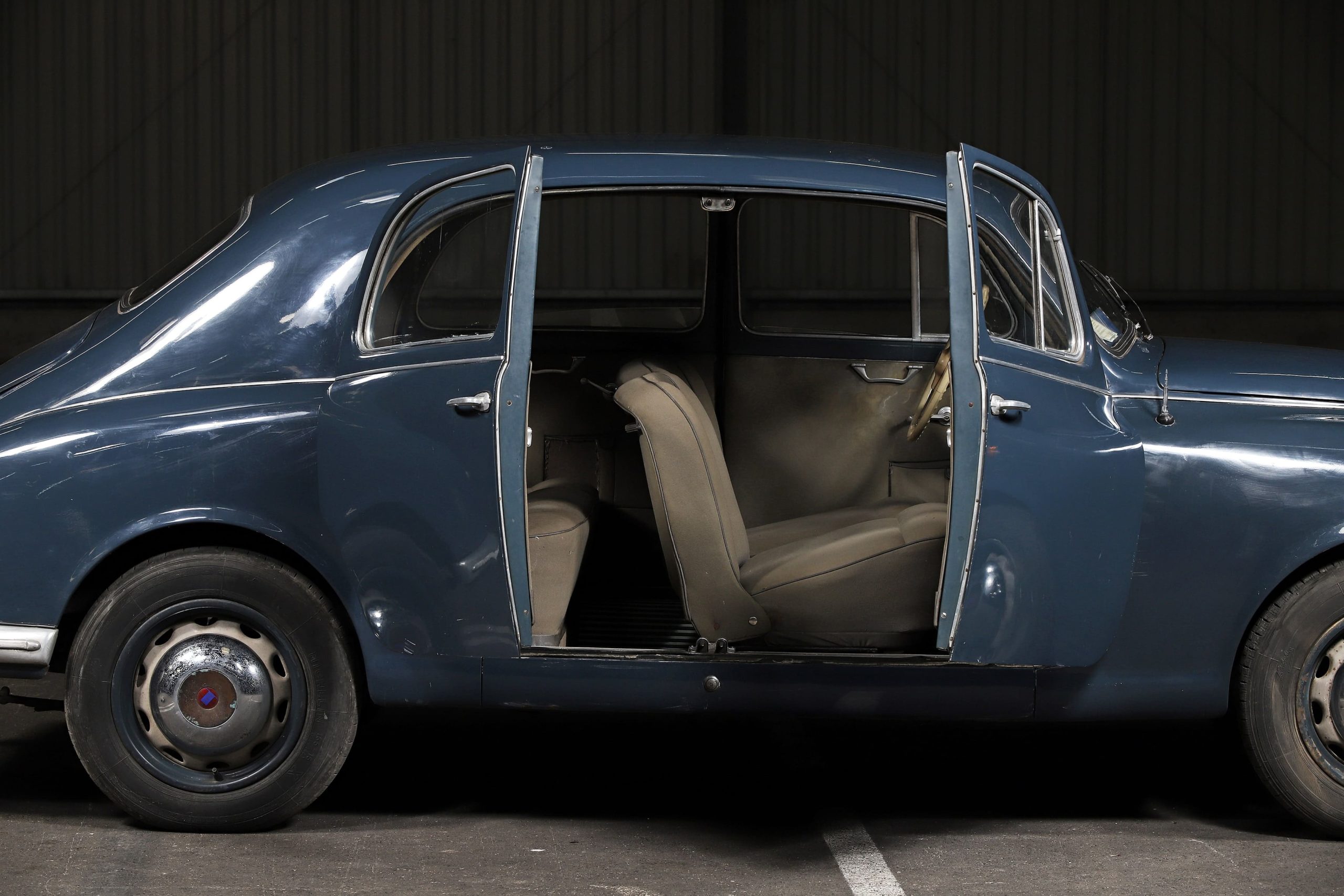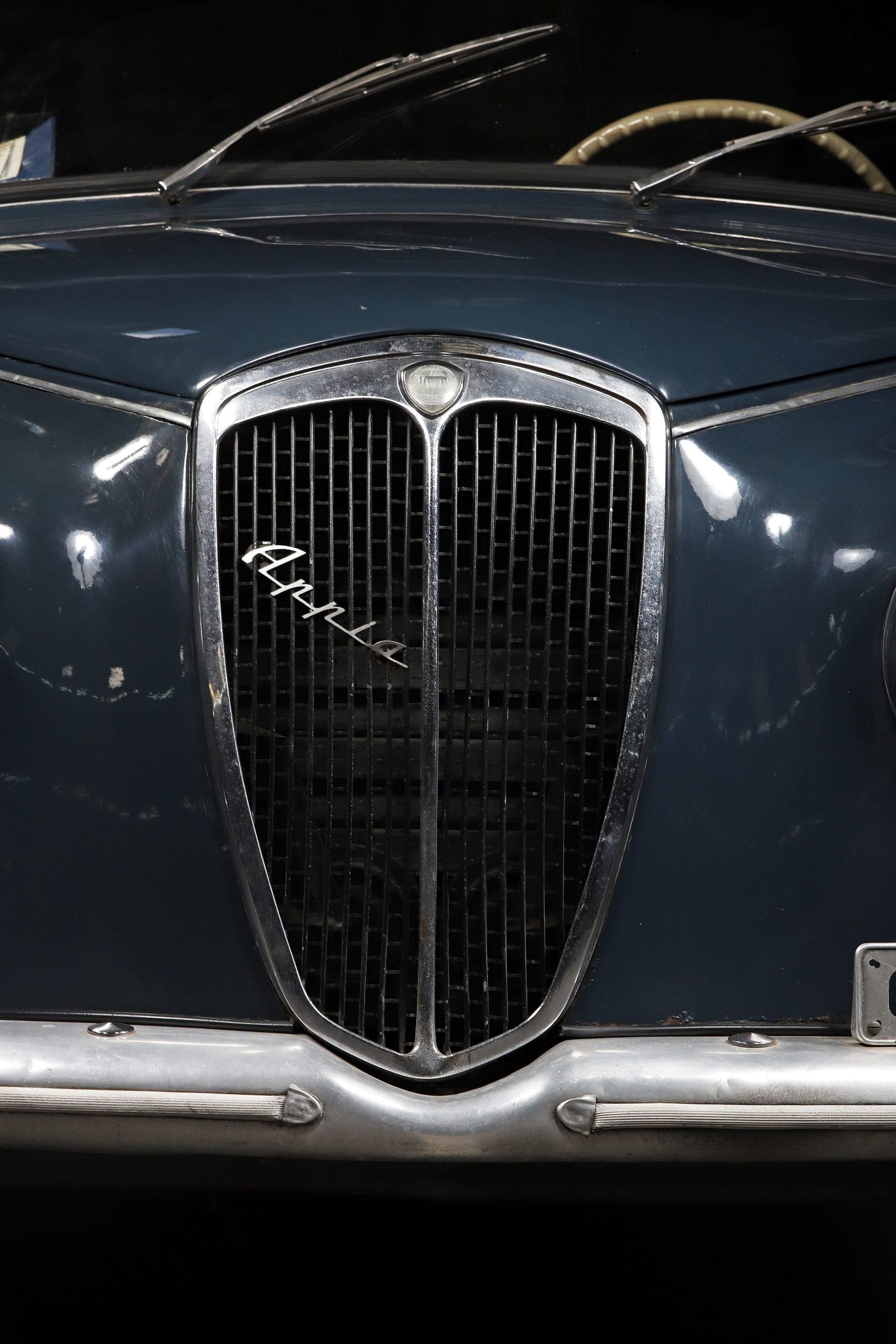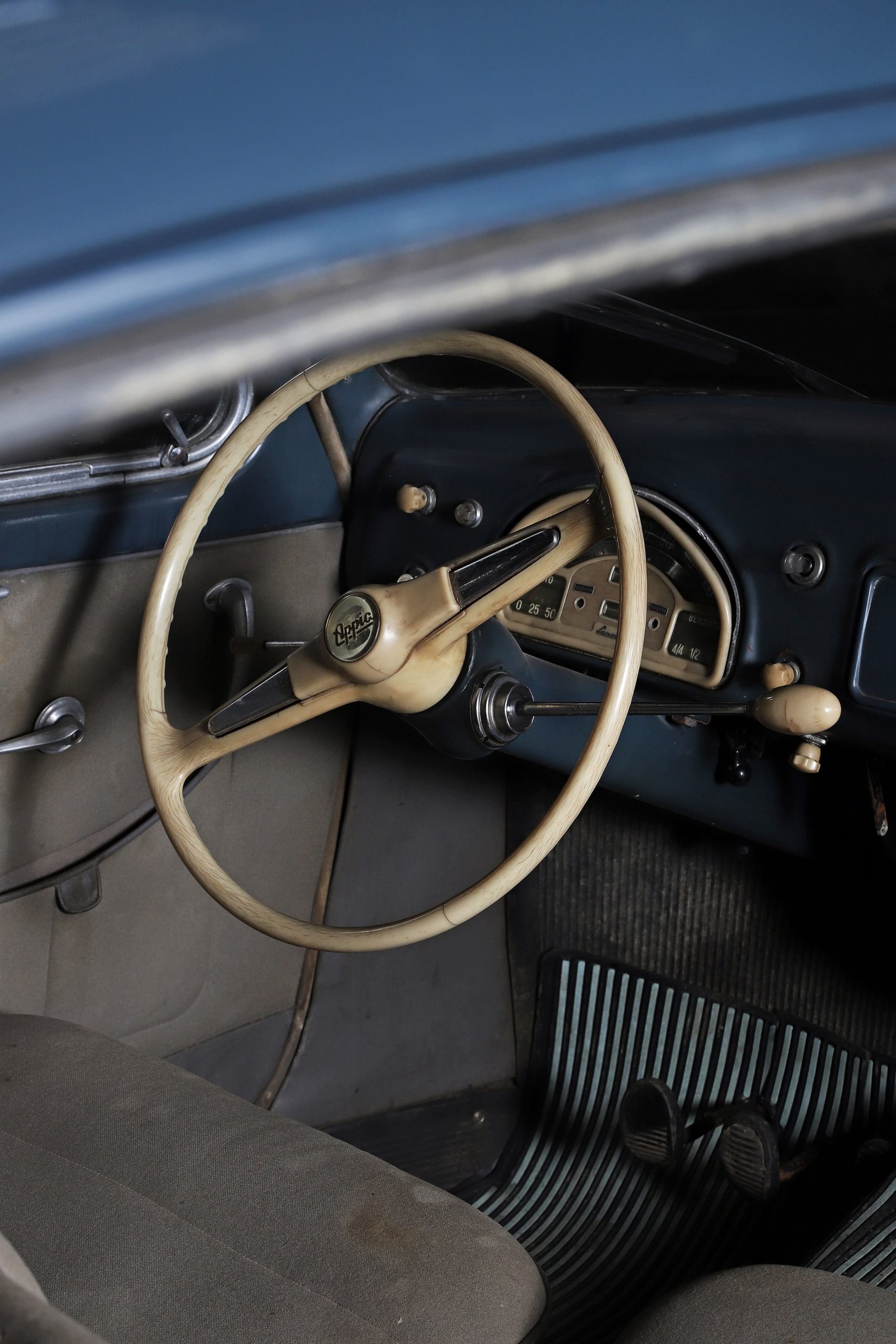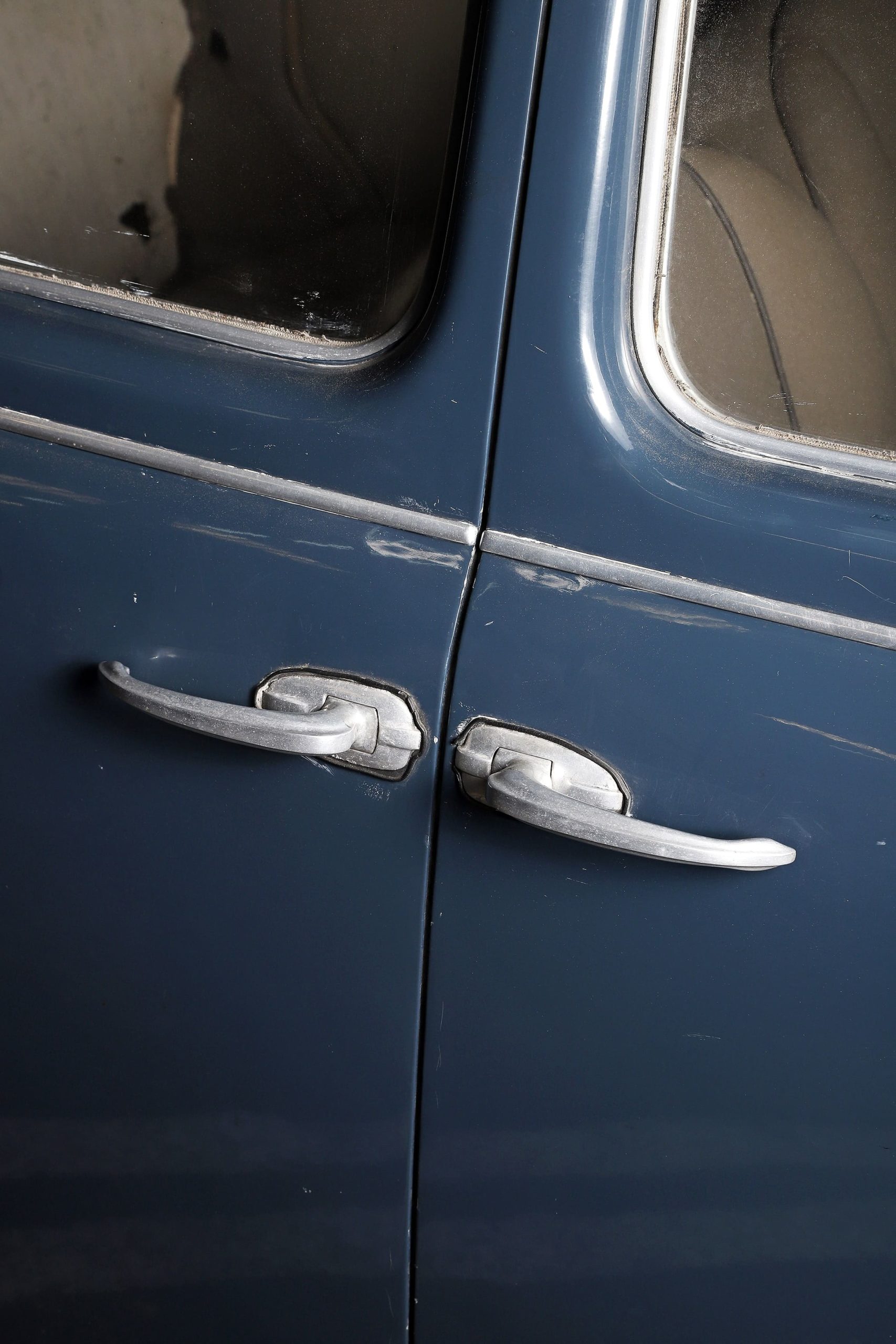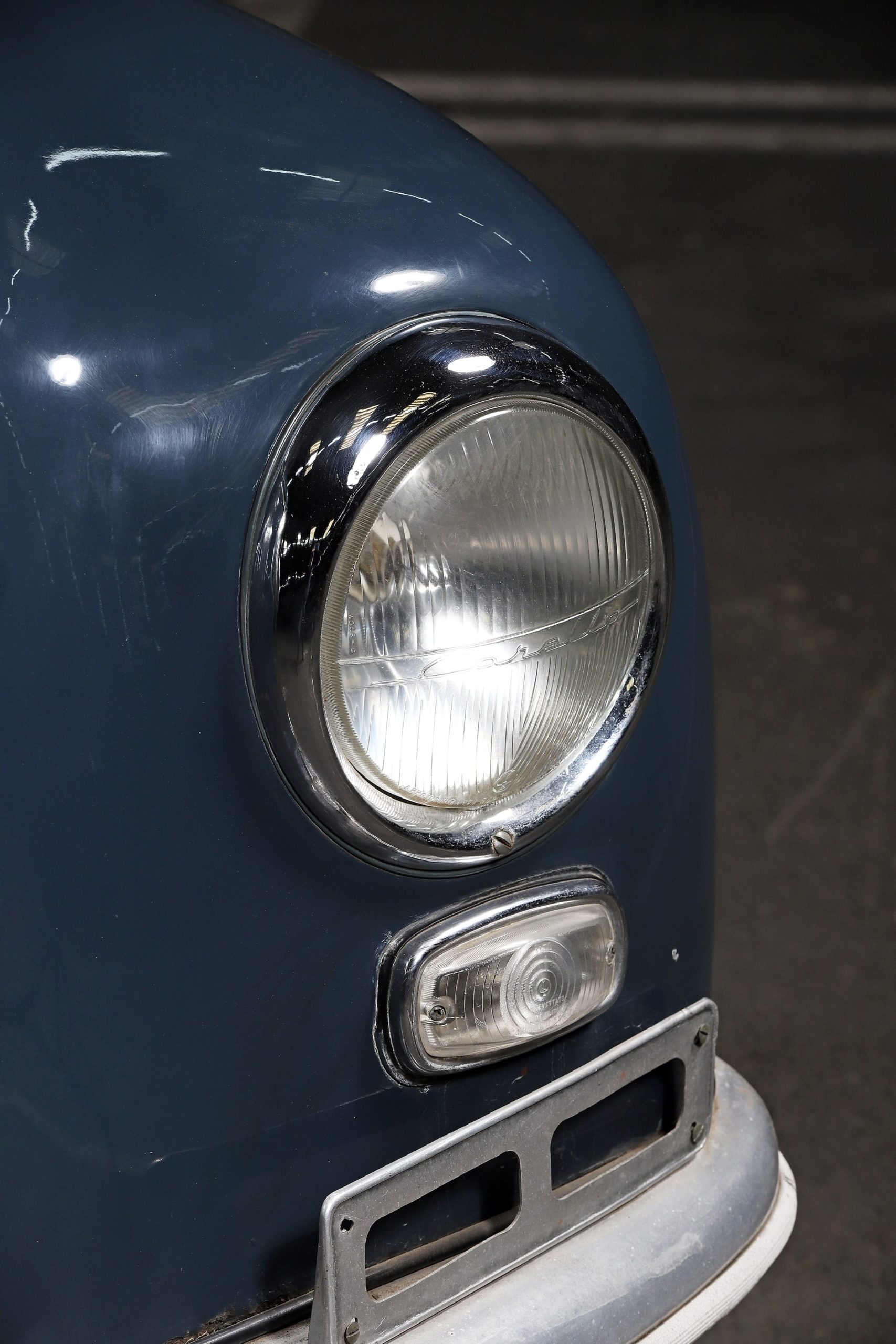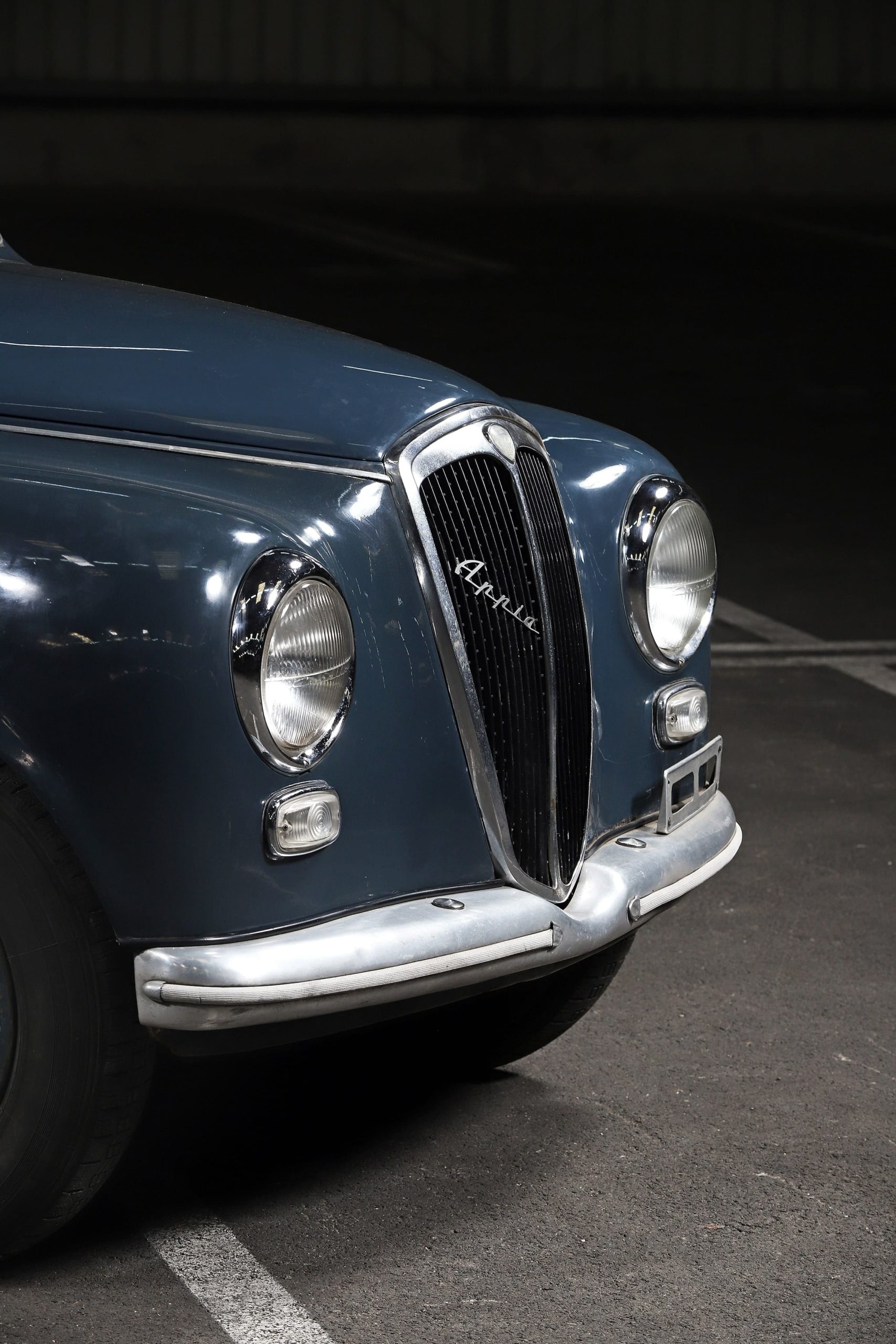Lancia Appia First Series - 1955
— The baby Aurelia B22 —- Model Lancia’s entry-level car which succeeded to the Ardea.
- Style A small saloon with very elegant lines, similar to those of the Aurelia B22 with their antagonistic doors and the absence of a central pillar.
- Positionnement A compact and popular yet very refined car.
- History A car that has spent its life in Italy, to be restarted and partially restored.
- Eligibility A car eligible to the Mille Miglia.
At the beginning of the 50s, Lancia was willing to keep a compact and popular entry-level model to complement the Aurelia and succeed to the Ardea. The Appia was born… Small and elegant, it was also distinguished by the technological innovations that Lancia has always been known for.
A little Lancia, both popular by vocation and sophisticated by its degree of technological refinement.
Renowned for its technological innovations, Lancia wanted to keep a small popular car in its offer. Without competing directly on that market with the giant carmaker Fiat, Lancia has managed to keep a niche of sophisticated cars, to which its customers are very faithful. Similarly, these small entry-level cars were intended to attract new customers.
In the spring of 1953, Lancia decided to launch a small car to replace the Ardea. At that time, the Aurelia had already been successfully launched and it was therefore the Appia that was about to enter the scene as the new entry-level car of the Milanese brand. Like all Lancias from this era, it was named after a Roman road, the Via Appia.
In terms of engine, it was still based on the company’s own V4 single bloc engine with aluminium cylinder head. Although it was also built with the rigid axle of its predecessor, it was clearly distinguished by a plethora of technological innovations. All of them were very noticeable at the time for such a small car with a popular vocation.
For instance, the Appia was dotted with an independent front axle, sophisticated telescopic suspensions and an engine with two side camshafts. With a displacement of 1,090cm3 and 38 hp at 4,400 rpm, the small and light Appia, weighing only 820 kilos, guaranteed more than honourable performance.
©Aguttes
A very harmonious design that takes its cue from the Aurelia B22.
The Appia Series 1 is characterised by the great elegance and purity of its lines, where the antagonist doors close without any central pillar, like what the Aurelia B22 saloon was already known for. The car’s rigidity is nevertheless guaranteed.
Inside, the dashboard is painted, another common characteristic with the Aurelia B22. Last, the interior space is surprisingly large for such a small car. So much space makes the car very pleasant and comfortable.
The first Series of Appia was produced for three years with some modifications. Like many Lancias, it also appealed to racing teams. Today, the Series 1 is eligible for the Mille Miglia.
The Lancia Appia Série 1 from the
ANNA LISA collection
Produced in 1955 and sold new in Italy where it spent its entire life, the Lancia Appia Serie 1 in our collection is typical of the cars of this period with its steering wheel, gear lever and instruments, all coming in ivory white colour.
With its elegant blue body paint, which has most probably been repainted in the late 80’s, our Appia has retained its original interior which deserves to be restored.
The engine is to be restarted; the car will then be able to shine again thanks to its performance and advanced technologies. To enter it in the contemporary Mille Miglia would of course be a great challenge to achieve.
